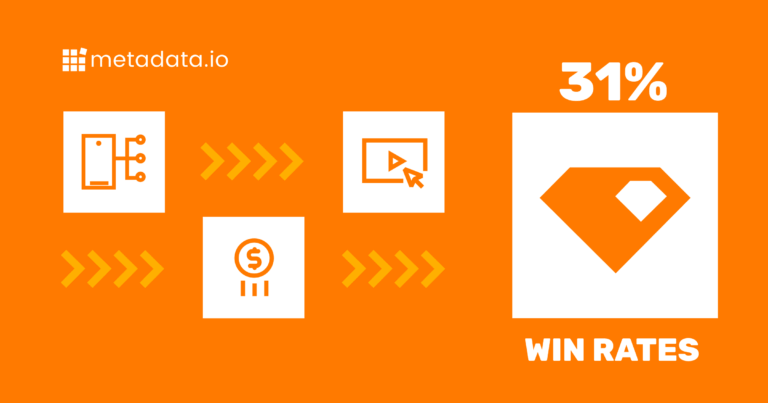By Marketers, For Marketers ep 4: Perpetual Demand and ABM History
In this episode of By Marketers For Marketers, Jason and Lauren Goldstein, CRO and Principal at Annuitas, talk through the history of ABM.
When did marketers “discover” ABM?
While Account-Based Marketing has existed for as long as marketing itself–the idea is interchangeable with personal, focused marketing–the term “ABM” has only been recently used to describe personalized marketing.
- A century ago: management consultant Joseph Juran coins the “Pareto Principle“, which is that 80% of outcomes are attributable to 20% of all inputs. In business, it becomes important to identify which inputs are most productive.
- In the 60s, IBM uses more personal marketing to deepen relationships with its top clients. “Achieve more with less.”
- In the 90s, Richard Koch identified the 80/20 rule as the most effective approach for sales organizations.
- In early 2000s, ITSMA (the IT Services Marketing Association) was the first thought leader to talk about ABM as “a PROVEN approach to building relationships with your most valued customers with highly targeted marketing interactions that demonstrate your in-depth understanding of their business.” ABM is recognized as being a more cost-effective approach to maturing relationships. It’s effective for attracting new customers, accelerating the current pipeline, or, most importantly as it is 3-5x more costly to acquire new customers, growing footprint with current customers.
- Today, the 80/20 rule is particularly good for marketers to understand because our resources are so limited. Often, there are lots of parties involved in decision-making, and long sales cycles mean that random marketing is an inefficient approach. Selling a more complicated product calls for a deeper journey, and a strong ABM framework is crucial.
Why does it seem like ABM has become a bandwagon term in the last 5 years?
In order to achieve scale with ABM, you really need to use technology to create a personalized experience. We used to have to gerry-rig technology to give customers this experience, but now there are so many good SAAS companies that allow for personalization, so we’re hearing about it a lot more often. Technology isn’t a strategy in itself, but it’s a great enabler when you have a strategy.
People associate ABM with engagement, assuming it will turn to revenue, because in the early days engagement is what platforms promoted, and they defined ABM as what they were good at doing. Conversations about ABM technologies obscured the actual process of ABM. ABM should be about building relationships. Whether you use one or a dozen platforms, is your strategy centered around solving your customer’s problems? Are you working alongside them in the long run to help them grow?
What are some good ABM strategies?
Again, technology itself is not a strategy. Good strategy has:
- a well-defined ICP. You should define beyond their size and role–more important is their mindset and attitude. Everyone has access to the basic filters (industry, headquarters, company size…), so you’ll have to be more creative about finding additional intel. What social media do they use, where are they posting ads, where do they want their message to be heard, what is their funding round–intent data and social media activity can provide you with this information
- build a meaningful conversation to address the needs of accounts, and be able to pivot and evolve based on their involvement on your website and engagement with content. Orchestrate sales and marketing processes around this buyer journey, at an individual level
- a goal beyond getting the campaign out the door–be able to measure and optimize launched campaigns to see where you need to adjust the messaging
What is Perpetual Demand-Generation?
Perpetual Demand Generation is a go-to-market strategy centered around a theme customer’s care about. Companies are getting better at creating content, but 82% of the time they deliver it at either the wrong time or wrong place. The notion of being “always on” means recognizing the right time and place to have the right conversation. When people become sensitive to this, they gain 1.7% or even as high as 3% conversion from the top-of-funnel to closed-won, as opposed to the average .3%.
What has the biggest impact on conversion rate?
Time, relevance, and a focused team. In early days, we looked at engagement and clickthrough rates, and didn’t pay attention to who made it through the funnel. Now, it’s essential to optimize what works by looking at data. This is a process and mindset principle, rather than a technology problem. When you spend more time optimizing and experimenting, you’ll find that you need to do less work overall.
Often, management is the biggest barrier to adopting this mindset. It’s flipping marketing on its head and retooling the process to be buyer-centric, which can be scary. But ultimately is far more predictable and sustainable. Think of data-driven ABM as a corporate growth initiative, as opposed to a marketing campaign.


